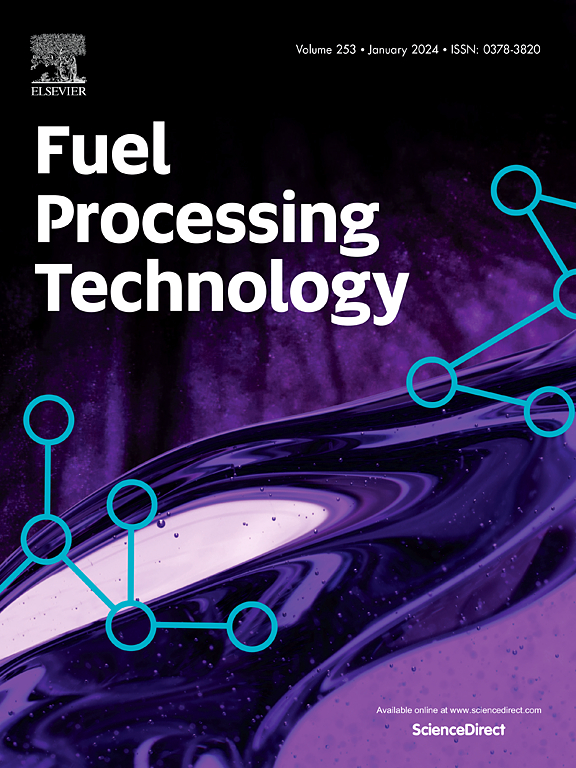Isolating the influence of exhaust gas recirculation on the ignition and combustion reaction for combustion control of polyoxymethylene dimethyl ethers (PODEn)/gasoline under various fuel distribution conditions
IF 7.2
2区 工程技术
Q1 CHEMISTRY, APPLIED
引用次数: 0
Abstract
Using exhaust gas recirculation (EGR) is a potential way to modulate the combustion process and improve the performance of a compression-ignition engine. In this study, the influence of EGR on the ignition and combustion reaction of polyoxymethylene dimethyl ethers (PODEn) as a gasoline-doped fuel was isolated for combustion control under various fuel distribution conditions, including fuel homogeneous, concentration-stratification, and reactivity-stratification conditions. In addition, the effect of EGR on engine performance was also isolated from CA50 (50 % burn point). The results indicated that for P20G80 (blend of 20 % PODEn and 80 % gasoline by volume), increasing 10 % PODEn and simultaneously introducing 60 % EGR can realize the same CA50 control as P20G80 under homogeneous conditions. For P20G80 under concentration-stratification conditions at the start of injection (SOI) of −180 and −160 °CA ATDC, introducing a slight amount of EGR below 10 % can promote the combustion intensity, since the unburned fuel recycled from the previous cycle through the EGR increases the local fuel concentration. Under fuel reactivity-stratification conditions, compared to the test conditions without EGR, the decreasing rate of ignition delay with the retarded SOI significantly reduces with the introduction of 25 % EGR, suggesting a nonlinear effect of EGR on the ignition delay.
分离废气再循环对聚氧二甲基醚(PODEn)/汽油在不同燃料分配条件下的点火和燃烧反应的影响,进行燃烧控制
采用废气再循环(EGR)是一种调节燃烧过程和提高压燃发动机性能的潜在方法。本研究分离了EGR对聚氧亚甲基二甲醚(polyoxymethylene dimethyl醚,PODEn)作为汽油掺杂燃料的点火和燃烧反应的影响,在不同燃料分布条件下进行燃烧控制,包括燃料均匀、浓度分层和反应性分层条件。此外,EGR对发动机性能的影响也从CA50(50%燃点)中分离出来。结果表明,对于P20G80 (20% PODEn与80%汽油体积混合),在均匀条件下,增加10% PODEn并同时引入60% EGR可实现与P20G80相同的CA50控制。对于喷油开始(SOI)为- 180°和- 160°CA ATDC的浓度分层条件下的P20G80,引入少量低于10%的EGR可以提高燃烧强度,因为从前一个循环中通过EGR回收的未燃烧燃料增加了当地的燃料浓度。在燃料反应性分层条件下,与不加EGR的试验条件相比,25% EGR的引入显著降低了SOI延迟点火的降低率,表明EGR对延迟点火的影响是非线性的。
本文章由计算机程序翻译,如有差异,请以英文原文为准。
求助全文
约1分钟内获得全文
求助全文
来源期刊

Fuel Processing Technology
工程技术-工程:化工
CiteScore
13.20
自引率
9.30%
发文量
398
审稿时长
26 days
期刊介绍:
Fuel Processing Technology (FPT) deals with the scientific and technological aspects of converting fossil and renewable resources to clean fuels, value-added chemicals, fuel-related advanced carbon materials and by-products. In addition to the traditional non-nuclear fossil fuels, biomass and wastes, papers on the integration of renewables such as solar and wind energy and energy storage into the fuel processing processes, as well as papers on the production and conversion of non-carbon-containing fuels such as hydrogen and ammonia, are also welcome. While chemical conversion is emphasized, papers on advanced physical conversion processes are also considered for publication in FPT. Papers on the fundamental aspects of fuel structure and properties will also be considered.
 求助内容:
求助内容: 应助结果提醒方式:
应助结果提醒方式:


